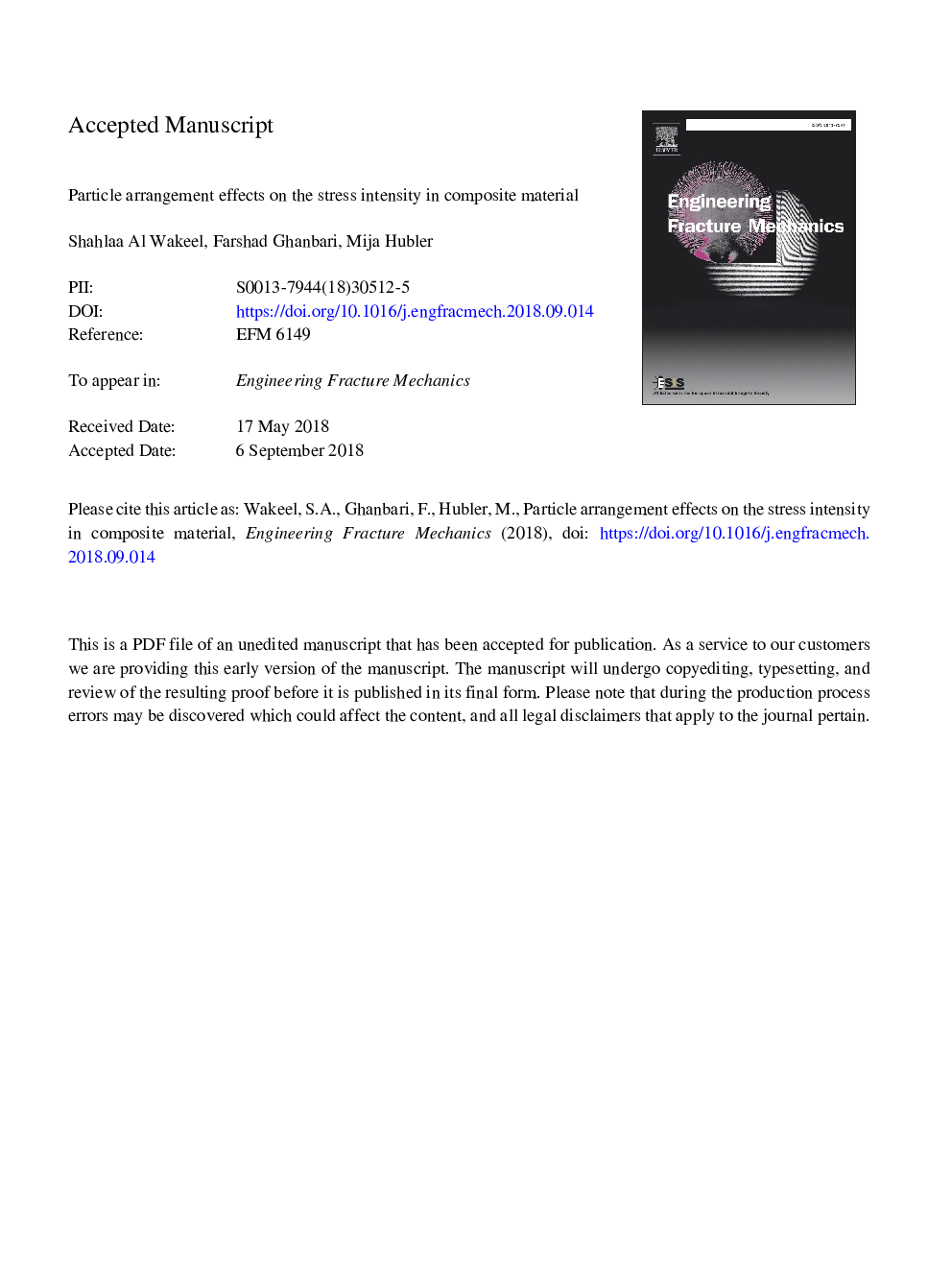| Article ID | Journal | Published Year | Pages | File Type |
|---|---|---|---|---|
| 10152376 | Engineering Fracture Mechanics | 2018 | 15 Pages |
Abstract
Motivated by recent advances in material design methods that allow for the controlled engineering of microstructure, we study how the degree of spatial ordering of the inclusions within a particle composite will affect the stress intensity factor associated with an existing crack. By exploring statistically representative sets of random inclusions using linear elastic fracture mechanics expressions, trends of the particle arrangement effect on the stress intensity factor are observed. We find that ordered, random, and clumped inclusion arrangements show an increasing effect on toughness, in that order. These results are verified using finite element analysis. To quantify the observed trend in material behavior with the spatial order of inclusions we consider two metrics of order: the bond-orientational order parameter, Q, and the translational order parameter, T. Finite element models of particle composites with increasing degrees of order reveal that the increasing effect on toughness can be captured and that T is more closely correlated to the effect on the stress intensity factor. We also find that the correlation between the stress intensity factor and particle arrangement is sensitive to the nearest-neighbor distance in Q, revealing that a quantifier approaching a global measure of order is more representative depending on the inclusion volume fraction. The results of this work can improve our understanding of how the stress intensity factor in particle composites explicitly varies with inclusion arrangement. It also provides key insights to develop formulations to engineer random composite microstructures for improved material fracture integrity and to identify issues in quality control of manufacturing methods involving particle distribution.
Keywords
Related Topics
Physical Sciences and Engineering
Engineering
Mechanical Engineering
Authors
Shahlaa Al Wakeel, Farshad Ghanbari, Mija Hubler,
